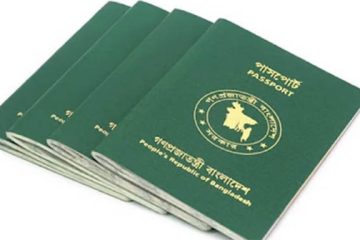All steps to revive the Buriganga river from persistent pollution have turned into a fiasco, as dumping of garbage and untreated industrial effluents into the river is going on unhindered. People living on the banks of the river continue to dump garbage into the Buriganga, even though the government has already spent Tk. 16.53 crore under a pilot project to clean the river.Bangladesh Inland Water Transport Authority (BIWTA) sources said the government’s plan to save the river would not be fruitful unless sources of rampant pollution are plugged and people change their habit of throwing garbage into the river.
Abdus Sobhan, former additional director general of the Department of Environment, said the Dhaka WASA, factories lined up on the riverbank and motor launches and engine-powered boats are responsible for the pollution. “If the government can stop these major sources of pollution, the quality of the Buriganga water will improve gradually. Tanneries and dyeing factories, boat yards and drains, and motor boats daily discharge untreated effluents into the river,” he added.
Sobhan told The Independent that shifting of tanneries, installation of effluent treatment plants, stopping industrial wastes from being dumped into the river, plugging of drains and awareness among the people living on the riverside can revive the pristine quality of the river’s water.
Environment and forest minister Dr Hasan Mahmud claimed that the level of dissolved oxygen (DO) has increased a little in the waters of the Buriganga due to the initiatives taken to clean the river. “We’re the regulatory body, but not the implementing authority. If the ministries concerned submit any project to us about cleaning the Buriganga, we’ll allocate the required money from the Climate Change Fund,” he said.
Rakibul Islam Talukder, superintendent engineer of the BIWTA, said they have already submitted a project of Tk. 238 crore to the authorities to clean the 17-km stretch of the Turag, Buriganga and the Shitalakhya like the Buriganga Cleaning (pilot) Project. The project is awaiting approval by the Executive Committee of National Economic Council (ECNEC). Moniruzzaman, scientific officer of the Bangladesh Council of Scientific & Industrial Research (BCSIR), said they had detected the DO level at 0.15 micro gram per litre (mg/L), BOD 2096 mg/L, NH4 105 mg/L and EC 1229 micro semence per centimetre in the Buriganga during March-April, 2011. “Any aquatic life requires DO 6mg/L, BOD 0.2mg/L, NH4 0.5mg/L and EC 500 us/cm to survive,” he added.
“The quality of the Buriganga water during the dry season is very, very bad. The DO level improves a bit during monsoon,” the scientist further said.
Experts have expressed grave concern about the issue. They said the government must plug the sources of pollution before it is too late to revive the river. Otherwise, all cosmetic efforts would only result in lining the pockets of persons involved in bagging cleaning-up projects.
-With The Independent input




















